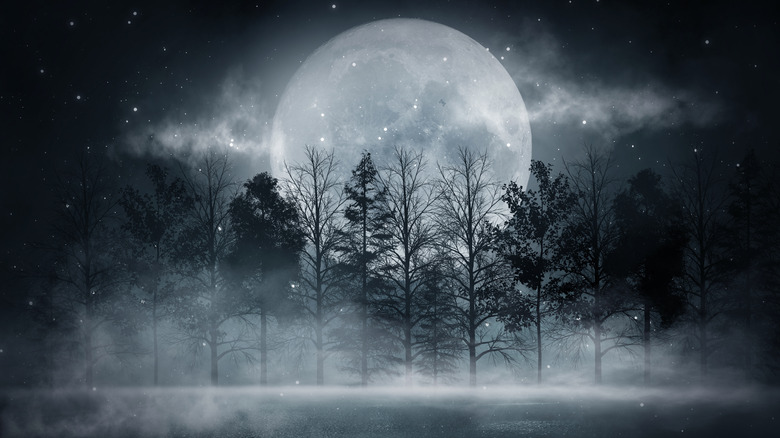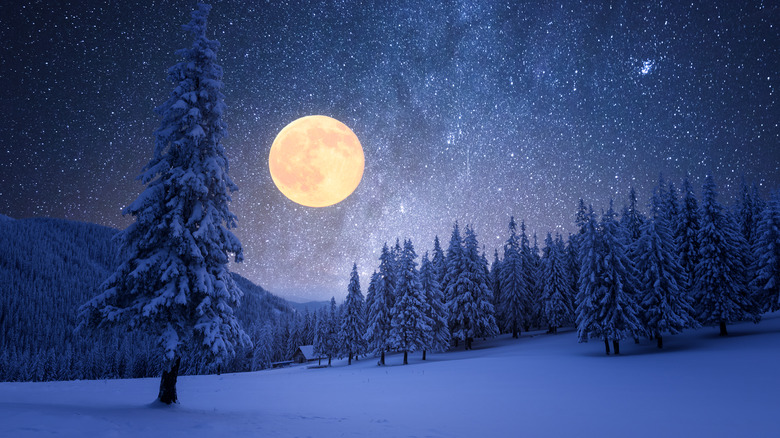What Is A Snow Moon? We Explain
For millennia, humans have kept time by the movement of the stars, planets, sun and moon in the sky. It is and always has been an inexact science, as the Earth doesn't make a complete revolution around the sun in an amount of time that's easily divisible into smaller units. Similarly, the moon's revolution around the Earth and the calendar months don't line up perfectly, meaning that a calendar year could see as many as 13 full moons and new moons, as EarthSky points out.
Regardless of the impracticality of relying on the sky for keeping time — for some cultures, it was all they ever had — as explorers to the New World found out when they first encountered Native Americans. As Newsweek points out, tribes had various names for the different full moons based on when they appeared in the year. One such moon, the "snow moon," is expected in February.
February is the snowiest month of the year
On February 16, 2022, the full snow moon will be at its, um, fullest, The Old Farmer's Almanac reports. Indeed, the February full moon has been known as the snow moon for at least a couple of centuries, according to tradition. Though January is generally the coldest month of the year, February is the snowiest, as the Dakota tribe — though lacking concepts such as record-keeping and data analysis — seemed to have hit upon well before Europeans arrived. Captain Jonathan Carver, who visited the tribe in the 1760s, noted that they called the February full moon the "snow moon," and the name seems to have stuck.
It bears noting, however, that other tribes had their own name for the February full moon, as Newsweek points out. The Cree called it the "bald eagle moon," while the Ojibwe called it the "bear moon" because it occurs around the time bear cubs are born. Even Europeans had their own name for it: the "trappers' moon," owing to the fact that February was a great time to trap beaver, fox, and mink.

